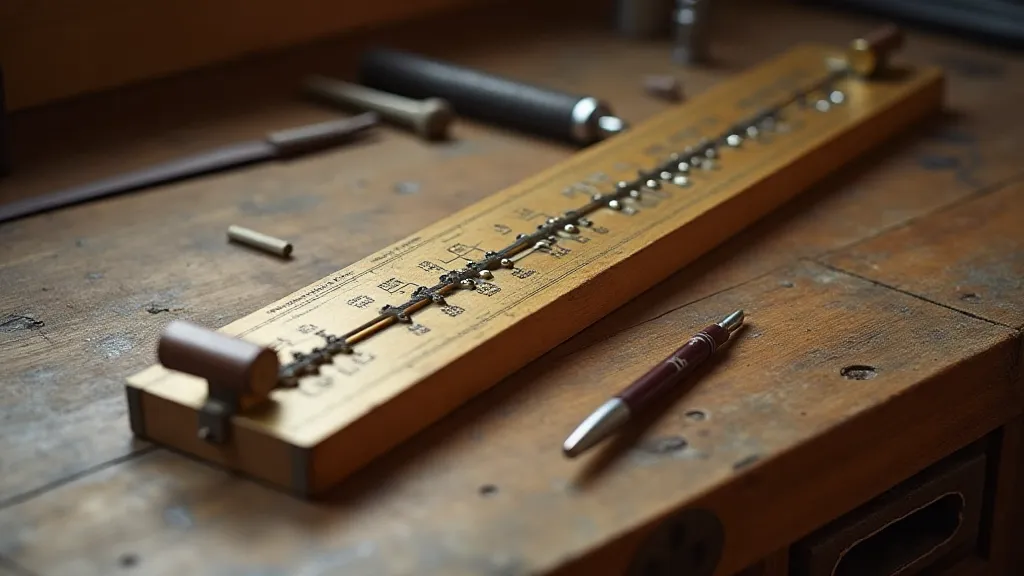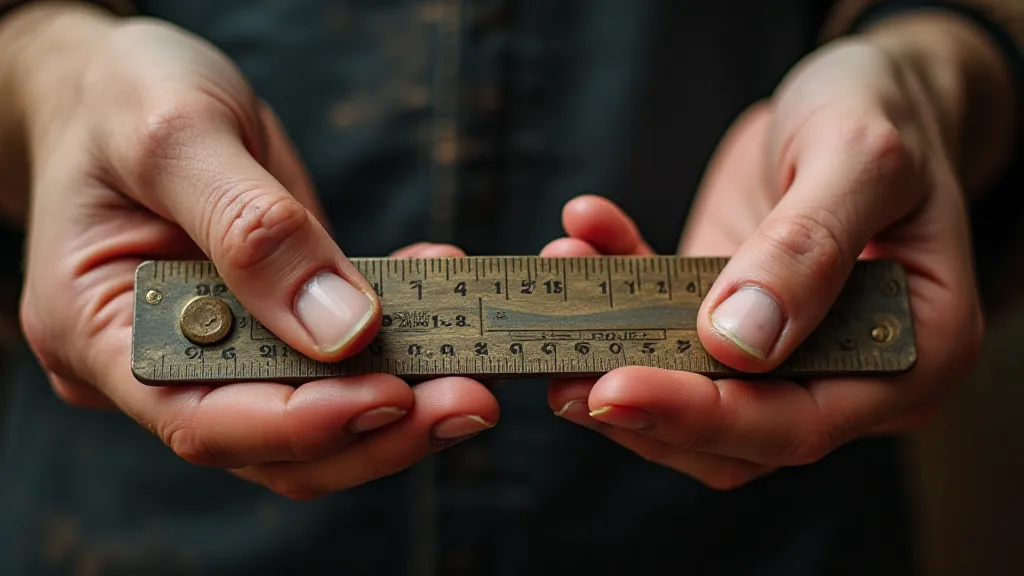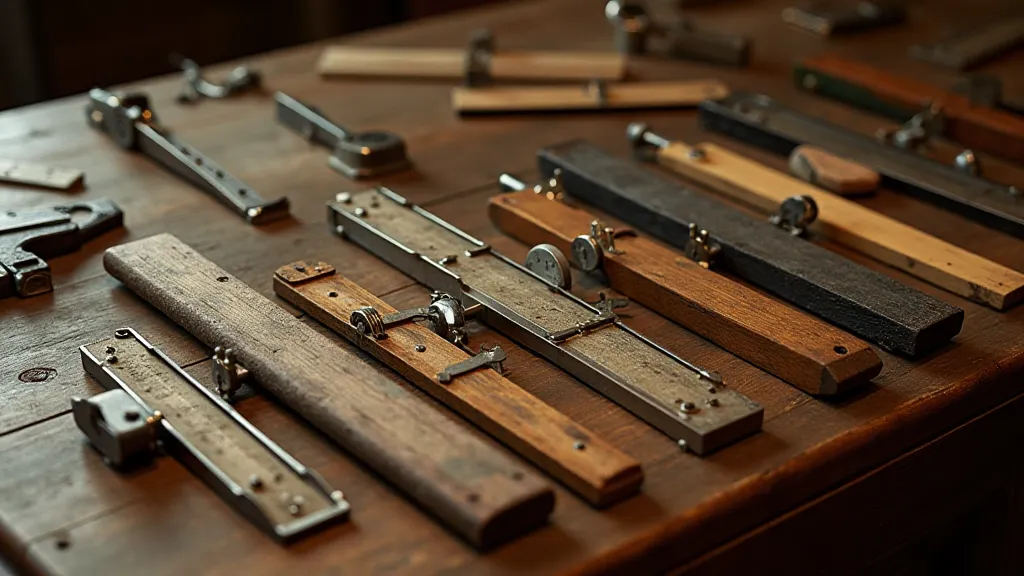A Tangible Universe: Slide Rules and the Democratization of Engineering
There's a quiet poetry in holding a slide rule. It's not the flash of a new gadget, nor the sterile hum of a computer. It's the feel of polished wood, the satisfying click of a brass cursor, the weight of ingenuity distilled into a hand-held tool. These artifacts, once ubiquitous in engineering offices and classrooms, are now relics of a bygone era, but their story speaks volumes about the evolution of technology and, perhaps more importantly, about the democratization of access to complex problem-solving. They represent a time when ingenuity wasn't limited by the computational power at one's disposal, but driven by it. They embody a tangible connection to the universe of numbers, a universe now largely obscured by screens.
My own fascination began with my grandfather, a civil engineer who, late in life, started teaching me about slide rules. He wasn’t interested in nostalgia; he genuinely believed that understanding the underlying mathematics—the *why* behind the calculation—was more valuable than merely obtaining an answer. He’s the one who entrusted me with his well-worn Pickett model 4, a sturdy, reliable workhorse. The faint scent of oil and decades of use clung to it, a physical manifestation of countless calculations performed, projects designed, and problems solved. Holding that slide rule wasn't just holding a tool; it was holding a piece of his history, a silent testament to his craft.

The Rise of the Slide Rule: An Era of Accessible Engineering
Before the advent of electronic calculators and, later, personal computers, the slide rule was the cornerstone of engineering and scientific calculation. Its origins can be traced back to the 17th century, but it wasn't until the 19th and 20th centuries that it truly came into its own. The earliest versions were rudimentary, relying on principles of proportional division. But the development of the log-log scale in the early 1800s – a relatively simple, but incredibly powerful concept – transformed the slide rule into the instrument we recognize today. This allowed for multiplication, division, exponents, roots, trigonometry, and logarithms to be performed with surprising accuracy, given the limitations of the technology. Companies like Pickett, Faber, and Regula became synonymous with quality and reliability, their slide rules sought after by engineers worldwide. The precision achieved through these tools truly fostered a culture of precision, impacting fields beyond just calculation. Understanding how this complex system actually functions reveals a fascinating interplay of gears and scales; one might even explore the fascinating grammar of gears to appreciate the intricacies of its movement.
What's often overlooked is the profound impact these tools had on accessibility. Engineering, once the domain of a select few with access to expensive education and sophisticated equipment, started to open up to a wider range of individuals. A young person with a keen mind and a slide rule could, in theory, pursue an engineering career without needing a formal degree, at least initially. While formal training remained essential for many complex projects, the slide rule empowered individuals to explore, experiment, and build a foundational understanding of engineering principles. Understanding how these devices function mechanically, and appreciating the intricacies of their movement, is essential to grasping their cultural significance. For those seeking to delve deeper into the inner workings of these marvels, the grammar of gears explains how the system moves. The slide rule truly democratized the ability to perform complex calculations, fostering innovation and opening opportunities for countless individuals who might have otherwise been excluded. It’s a process that engages more than just the intellect; the very act of using a slide rule evokes a sensory experience – a feeling of brass and intuition – that’s increasingly rare in our digital age.
The Craftsmanship and Beauty of an Antique Tool
Beyond their functional importance, vintage slide rules are beautiful objects. The craftsmanship involved in their production is remarkable. The careful selection of woods – often mahogany, walnut, or maple – the precise machining of the scales, the intricate engraving of the markings, all speak to a level of attention to detail that is rarely seen in today’s mass-produced goods. Even the construction of the cursor, often made of sturdy metal, reflects a commitment to durability and functionality. Each slide rule is a testament to the skill and dedication of the artisans who created them. They weren’t merely tools; they were statements of quality and ingenuity.
Restoring a slide rule isn't just about making it functional again; it's about preserving a piece of history. It’s an exercise in patience and appreciation. A cracked scale, a loose cursor, or a faded marking aren't signs of failure; they are stories etched into the tool's surface, evidence of its long and useful life. A gentle cleaning with mineral spirits, careful lubrication of moving parts, and, if necessary, a delicate repair to a damaged scale – these aren’t just mechanical tasks; they're acts of reverence for the tool and the people who used it.

The Slow Decline and Enduring Appeal
The rise of electronic calculators and, later, personal computers, inevitably led to the slide rule’s decline. While some engineers continued to use them out of habit or preference, the efficiency and accuracy of electronic devices proved irresistible. The last commercial slide rules were produced in the early 1970s, marking the end of an era. Today, they're primarily found in museums, antique shops, and the collections of enthusiasts. Though relegated to a place of remembrance, a certain melancholy, a ghost in the gears, remains when contemplating their decline.
Yet, despite their obsolescence, slide rules retain a unique appeal. Perhaps it's the tactile connection to a bygone era, a time when engineering was more hands-on and less reliant on complex software. Or maybe it's the challenge of mastering a tool that requires a deeper understanding of the underlying mathematics. The markings on these tools, carefully calibrated and often intricately designed, hold a silent language that engineers of the past understood implicitly. Those interested in deciphering these markings may find further information here. Whatever the reason, the slide rule continues to captivate and inspire.
Collecting and Restoring: A Labor of Love
Collecting vintage slide rules can be a rewarding hobby. Different models represent different eras of engineering, and the variations in design, materials, and construction can be fascinating to study. Pickett slide rules, known for their accuracy and robustness, are particularly sought after, but there are countless other brands and models to discover. Faber and Regula are other highly regarded brands.
Restoration, too, can be a fulfilling endeavor. It’s not about bringing a slide rule back to a pristine, factory-fresh condition; it’s about preserving its character and functionality. Understanding the tool's construction is crucial, and a delicate touch is essential. There are online communities dedicated to slide rule restoration where enthusiasts share tips, techniques, and resources. Many resources are available regarding the different lubricants used and the intricacies of scaling.

Holding a restored slide rule, knowing that you’ve played a small part in preserving a piece of engineering history, is a deeply satisfying experience. It’s a tangible connection to the past, a reminder of the ingenuity and craftsmanship that shaped our world, and a testament to the enduring power of simple, elegant tools. It is a measure of ingenuity that changed the world.





